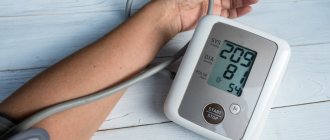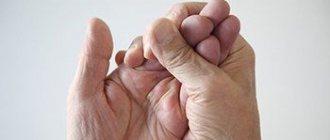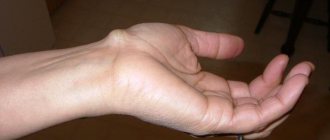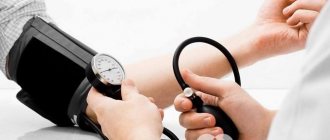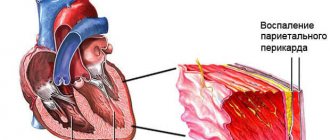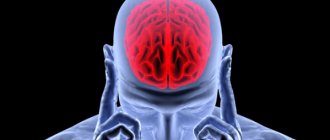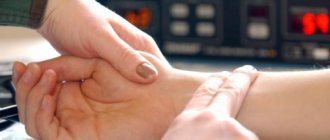If it cannot be felt on one hand, you should definitely check it on the other. You should also determine the presence of heartbeat, breathing and the reaction of the pupils to light. May not be palpable when:
- injury to the cardiovascular system;
- bradycardia;
- physiological characteristics of the patient;
- hypothermia;
- after heavy physical exertion;
- pregnancy;
- cardiosclerosis;
- presence of scars after myocardial infarction;
- atherosclerosis of coronary vessels;
- poisoning with chemicals;
- exposure to synthetic drugs;
- thyroid diseases;
- high ICP;
- hypercalcemia.
In a living person, the heart beats, the blood circulates and, accordingly, there is a pulse. If the problem occurs suddenly, and a person’s limbs become numb, vision becomes dark, nausea and weakness appear, it is important to consult a doctor immediately. Often, the physiological characteristics of this effect are known from birth.
Major violations
Some people may feel an uneven pulse with a delay or, conversely, an accelerated heartbeat. Why does such a deviation occur and why is it so important to pay attention to it? The fact is that the normal functioning of all organs and tissues of the human body depends on the correctness of heart contractions, which should be rhythmic.
Pacemaker cells are responsible for maintaining this process at the proper level. They produce an electrical impulse that has a constant frequency. The excitation wave occurs in the sinus and atrioventricular nodes, and then is transmitted along the conductive paths (bundle of His) to the corresponding parts of the heart. The muscles contract.
An irregular pulse is called arrhythmia. This deviation is associated with a violation of the conduction or formation of the excitation wave. A heart rate of 60-90 beats per minute is considered normal when the body is not subjected to significant physical stress. Heart beats should occur at equal intervals. There are three main heart rhythm disturbances:
- Tachycardia. Pulse is frequent.
- Bradycardia. The contraction frequency is slow.
- Extrasystole. Additional contractions occur against the background of a normal rhythm.
Rhythm disturbances may occur from time to time (called paroxysms). Sometimes they are asymptomatic and quickly lead to a deterioration in the patient’s condition. In some cases, such violations result in death. If such a condition is not a consequence of heart pathology, then it responds well to treatment. If myocardial damage is present, the disease becomes chronic and requires constant therapy.
Atrial fibrillation
If with respiratory arrhythmia there is some order in the heartbeats, then with atrial fibrillation they follow without any pattern at completely different intervals. This is easy to notice by the pulse, since the waves become disordered and it is absolutely impossible to determine at least some principle of change in their frequency.
Atrial fibrillation can be a manifestation of serious disturbances in the functioning of the heart. It often occurs after a myocardial infarction and persists for life.
Once you have determined the rhythm of the pulse waves (and therefore the heartbeats), you need to calculate their number per minute. To do this, you need to count the waves for a whole minute, since their frequency may change during this time, and you will get inaccurate results. It would be much more convenient and correct to count the number of waves in 10 or 15 seconds, and then multiply by 6 or 4, respectively.
A result of 60 to 80 beats per minute is considered normal. Anything above this is considered tachycardia (fast heart rate), and anything below is considered bradycardia (slow heart rate).
Tachycardia can be a sign of a large number of diseases or simply indicate a change in the functioning of the body. It occurs in healthy people in cases where tissues require more oxygen (for example, during physical activity, fear or anxiety). In addition, tachycardia always occurs when blood pressure in the vessels decreases. Increased heart rate can occur in many diseases (for example, hyperthyroidism (increased amounts of thyroid hormones in the blood), many infectious diseases, etc.).
This is interesting!
It has been established that a woman has a softer pulse than a man. Old people have an empty pulse: there is little energy in it. Children have a fast, hard, frequent pulse.
In addition, tachycardia can also occur when the normal functioning of the heart is disrupted.
Bradycardia also occurs in many diseases, including hypothyroidism (a decrease in the amount of thyroid hormones in the blood), all kinds of poisoning that affect the functioning of the heart (including poisoning with certain medications), etc.
Now determine the pulse voltage. To do this, press the artery tightly against the bone with your fingers so that the pulsation completely stops. If you succeeded with difficulty, the pulse is called hard, but if the artery is pressed lightly, the pulse is soft. In a healthy person, there is a golden mean between a hard and soft pulse.
A hard pulse occurs when blood pressure in the vessels increases: in hypertension, when the amount of thyroid hormones in the blood increases, etc. In addition, it is possible during physical or emotional stress, when the heart works harder than usual to supply organs and tissues the right amount of oxygen.
The pulse becomes soft when the blood pressure in the vessels decreases (for example, during shock), as well as in some heart diseases, when the heart contracts weaker than usual.
In addition, the pulse voltage also depends on the condition of the vessel itself, or rather, its wall. It is usually thin and smooth.
You've probably heard about atherosclerosis - a disease in which peculiar growths - plaques - appear on the walls of the arteries. As a result, the wall of such a vessel becomes denser, and its lumen narrows. If atherosclerosis has also affected the radial artery, this can be determined by the pulse. It will be hard, when you squeeze the artery so that the blood does not pass through it, you will still feel the thread of the vessel under your fingers.
The filling of the pulse depends on how much the artery fills with blood during the passage of the next wave. It depends on the level of blood pressure in the arteries, and therefore on the work of the heart, on the amount of blood in the body, etc. The normal filling of the artery is easy to determine: during the passage of the pulse wave it noticeably expands, and finding the place of pulsation is not difficult.
When blood pressure in the vessels decreases (myocardial infarction, shock or severe blood loss), the pulse becomes empty.
The pulse value is actually a combination of its two previous characteristics: tension and filling. The magnitude is the degree of expansion of the artery during the passage of the pulse wave. It depends primarily on the blood pressure in the vessels. With high blood pressure, as well as with some heart defects, the pulse becomes large and can be easily felt under the thin skin of the wrist. If the blood pressure decreases, the pulse becomes small. In this case, finding the artery is not so easy. With a serious decrease in blood pressure, the pulse becomes thread-like. In this case, the artery can barely be felt under the skin, and it seems that it is no thicker than a thread. Usually, the person turns pale, cold sweat appears on the skin, and the eyes become dark. Sometimes he may even lose consciousness. If a thread-like pulse appears, you should immediately call a doctor.
Tachycardia
An uneven heart pulse may be a consequence of tachycardia. This pathology has several varieties:
- paroxysmal (there are periods when the pulse becomes normal);
- recurrent (interruptions in heart function are repeated);
- atrial fibrillation (occurs in people over 25 years of age, more often in old age);
- atrial flutter (people in old age are susceptible);
- ventricular (caused by cardiac factors, often coronary heart disease).
In 80% of cases, this pathology is explained by age-related changes. Focal or automatic tachycardias are explained by metabolic disorders. Because of this, the excitability of the pathways increases. Any impulses under such conditions cause muscle contraction. This type of tachycardia occurs in 10% of cases. In this case, an uneven pulse may appear in a child 10 years old or even younger. Treatment usually gives good results.
Goals for defining the indicator
This indicator is important in determining health status. Its values characterize the functioning of the heart; in the case of pathologies, they indicate whether the patient has rhythm disturbances.
An increase or decrease in heart rate also occurs when there are disturbances in the functioning of other organs. To diagnose many diseases, this parameter must be checked in the patient.
If a person has experienced irregularities in heart contractions once, this is not a cause for alarm. The presence of diseases is indicated by disturbances in their frequency, rhythm, filling and tension of the walls of blood vessels for seven days.
To detect a pathological condition, measurements are taken throughout the week at the same time.
In case of persistent deviations from the normal value of any of the parameters, a person should consult a qualified physician. Most often, when such a phenomenon occurs, the patient is prescribed additional diagnostic measures, and after the diagnosis is determined, appropriate treatment is prescribed.
The indicator is checked using the following methods:
- a special device for determining the pressure value;
- heart rate monitor;
- by palpation method.
This indicator can be measured in a hospital or at home. A medical worker checks your pulse in a hospital. You can do this at home on your own or with the help of your family.
Before diagnosis, it is important to exclude factors that influence increased heart rate.
The technique and procedure for performing the manipulation will be described below.
Causes and symptoms of tachycardia
Trigger tachyarrhythmia is caused by an electrical impulse that exceeds the normal level.
The causes of tachycardia may be as follows:
- Transformation of muscle into connective tissue (myopathy).
- Chamber hypertrophy, cor pulmonale.
- Neoplasms that affect the heart.
- Intoxication (alcohol, nicotine, coffee).
- Kidney failure.
- Stimulants affecting the sympathetic nervous system.
In this case, a number of characteristic symptoms arise. The heart may beat intermittently, skipping beats. An increased shock may occur. The rhythm quickens and becomes uneven. During normal activities, a person feels tired. Breathing becomes more frequent, and a feeling of lack of air appears (especially during physical activity).
Patients also complain of darkening of the eyes and dizziness. Fainting is possible. The pressure becomes unstable and tends to decrease. There may be pain in the heart area. With severe complications, symptoms of cardiovascular failure appear. There is a risk of cardiac arrest.
How to check your pulse?
Vibrations of the vascular walls are easier to feel on a person’s neck.
Determining the jerk-like vibrations of arterial walls is a simple process that everyone needs to master. This does not require anything extraneous. It is easier to measure the pulse in the neck, where the carotid artery passes. But the standard way to check is on the hand near the thumb. To check the pulse, you need to place three fingers (middle, index and ring) slightly above the radial artery and press them to the bone. The rhythm of strokes on the left and right hands may not be the same, so you should first make sure of this. And if there are no differences, then you can trace them on one hand. But it should be located at the level of the heart.
Extrasystole
An uneven pulse intermittently may occur due to extrasystole. It develops for the same reasons as tachycardia. Often this pathology provokes a paroxysm of tachyarrhythmia. But more often this pathology does not have pronounced symptoms.
One of the first signs of extrasystole is an uneven pulse with a delay and interruptions in heart function. The patient may feel an increased heart rate and stop, the rhythm will freeze. This can be really scary. This situation requires immediate contact with a cardiologist or therapist.
If the patient has heart failure, the course of this disease worsens. The risk of death increases significantly. In healthy people, isolated cases of extrasystoles may occur. This situation does not require correction. But if such symptoms occur periodically, proper treatment is needed.
If the extrasystole is explained by damage to the heart muscle, the doctor prescribes beta blockers and ablation of high-frequency foci of extrasystole.
Signs of pathology
If the pulse is slightly reduced, then this condition is almost always asymptomatic. A decrease in heart rate to 50 beats per minute can affect a person’s well-being, and the following symptoms occur:
Chest pain
- dizziness
- weakness
- drowsiness
- irritability
If the pulse drops even lower, then other symptoms occur:
A further decrease in value is extremely dangerous for human health.
If the decrease in heart rate occurs due to heart disease, then other signs appear:
- fast fatiguability
- swelling of the arms or legs
- sweating
- drowsiness
Do not ignore all of the above symptoms. At the first signs, it is recommended to immediately consult a specialist.
Bradycardia
Patients may complain of an irregular pulse, as if the heart is stopping, with bradycardia. In this case, the heart rate does not exceed 60 beats per minute. Medical intervention is indicated in case of ventricular-type bradyarrhythmia. This disease is explained by abnormal impulse activity of the sinus node.
This disease is more common in older people. In the early stages there are virtually no symptoms. Only when the heart rate drops below 40 beats per minute does a person feel tired, as well as a number of other symptoms. Treatment in this case improves well-being, but it is not always possible to prolong the patient’s life. The course of the disease is progressive.
Atrioventricular blocks may also occur. The process of conducting the excitation wave is disrupted. If the blockade reaches 2-3 degrees of severity, there is a risk of cardiac arrest.
Symptoms of bradycardia are a decrease in heart rate, interruptions in its work and a feeling of stopping. Weakness becomes pronounced and gradually increases. A person cannot perform even the most ordinary tasks. Blood pressure changes. There are episodes of its increase that cannot be treated.
Consciousness is impaired to the point of deep fainting, chest pain occurs. They are not associated with physical activity. This disease often manifests itself as an uneven resting pulse. Treatment depends on the stage and presence of clinical signs of bradyarrhythmia.
How to provide first aid for a thready pulse
This condition is extremely serious and dangerous, even causing death, so the help of loved ones before the ambulance arrives is very important. This especially applies to women during pregnancy, children and adolescents, and older people.
What to do first:
- call and get an ambulance;
- increase the access of oxygen, to do this, open windows or vents, undress the patient or loosen the collar of his clothes;
- put the patient so that his head is slightly higher than his body and his legs are elevated;
- you can not put it down, but sit it down, while lowering your head as low as possible;
- It is very important to apply a cold compress in such a situation, rub your temples with ice or cold water;
- massage your earlobes;
- you can wet a cotton swab with ammonia and give it a sniff, thus bringing the patient to his senses and preventing him from fainting;
- to increase blood flow, pat the patient on the cheeks;
- if the patient is able, then give him a glass of weak, sweet, non-hot tea to drink.
Common causes of pathology
Help for an irregular pulse intermittently in older people or young people depends on many factors. First of all, the doctor must establish the cause of the development of this condition. The most common of them are:
- the patient drinks a lot of coffee or energy drinks;
- low blood sugar;
- lack of potassium;
- pathologies of the heart muscle;
- psychological problems.
One of the common causes of uneven heart rate is excessive coffee consumption. This drink contains caffeine, which speeds up your heart rate. This substance also increases blood pressure and makes the pulse uneven. If the heartbeat rhythm is fast, you need to at least temporarily give up coffee or reduce its amount. You should also exclude energy drinks, green tea and chocolate.
Lack of sugar can also cause uneven heartbeat. If this is the reason, you just need to eat 4-5 times a day. You need a hearty breakfast (oatmeal, buckwheat, lentils). Potassium deficiency is also a serious factor in the development of arrhythmia. This mineral helps strengthen the walls of blood vessels.
Proper, balanced nutrition is extremely important for proper heart function. The diet should contain foods rich in potassium, magnesium, and calcium. An imbalance between these minerals leads to heart problems.
First aid
It is very important not to panic at this moment. If you have experienced such situations before, then immediately take the medicine that was prescribed by your doctor just for this case. Self-prescribing medications is fraught with dire consequences.
The following drinks are very good for raising your heart rate:
- coffee
- various energy drinks
- hard-brewed tea
Mustard plaster, which should be placed on the chest, helps to normalize the pulse perfectly.
All of the above measures can be taken if such a phenomenon was not associated with heart disease.
Other reasons
An uneven pulse can be a consequence of other reasons. Psychological problems often affect the functioning of the heart. Stress and anxiety have a significant impact on the cardiovascular system. At a moment of danger, tension, the body goes into a special mode. Forces are concentrated to perform quick actions. Because of this, the heart begins to work more actively. If stress is constant, the body works in overload mode for a long time. He spends energy on this, depleting existing reserves of resources.
As a result, the heart begins to work incorrectly. It may freeze, beat faster or beat violently. The rhythm is also disrupted. In this case, the patient is prescribed a course of sedatives, often of natural origin (for example, tincture of valerian or motherwort). The attending physician also prescribes a course of medications to normalize heart rhythm.
Pathologies of the heart muscle can cause an uneven pulse. What to do in this case? Treatment is prescribed by a cardiologist after the patient undergoes appropriate diagnostic procedures. You will need to do an ultrasound of the heart and an ECG. In some cases, surgical treatment may be indicated.
Depending on the reasons that caused the heart rhythm disturbances, treatment may be prescribed. But in some cases, special therapy is not required. The patient is advised to normalize his work and rest schedule, as well as to start eating properly and nutritiously. It is worth remembering that self-medication in the event of heart rhythm disturbances can be life-threatening. This is a symptom of other pathologies that can be very serious. Therefore, it cannot be ignored.
How to lower your heart rate?
If the heartbeat does not decrease even after rest, take sedatives, which are available in your home medicine cabinet, to reduce it. The most suitable drugs for this are:
- "Validol";
- "Valocordin";
- valerian infusion;
- infusion of dog nettle;
- "Corvalol".
Fresh air will help lower your heart rate, so if you feel unwell, first open the windows and get some fresh air. It is better if someone present does this. It is also necessary to check your blood pressure, as high blood pressure can also cause rapid heartbeats. In this case, take your blood pressure medicine.
What pathologies need to be excluded?
A symptom of other pathologies is an uneven pulse with a delay. What to do in this case? We need to find the reason that led to the rhythm failure. In addition to external factors affecting the body, these may be internal reasons:
- Osteochondrosis. If this disease develops in the cervicothoracic spine, it can affect the rate and rhythm of the heart. This pathology is often observed in experienced office workers. They spend a lot of time sitting at the table. Because of this, they have problems with the spine.
- Thyroid diseases. If there is a decrease in thyroid function, the heart rate decreases. If this gland, on the contrary, is characterized by hyperfunction, the pulse quickens. Serious problems in the functioning of the heart may occur, including atrial fibrillation.
- Liver and kidney diseases. Due to such a violation, insufficient quality of blood purification occurs. Therefore, any diseases of these organs can lead to arrhythmia.
If the reason for the malfunction of the heart is a malfunction of the internal systems of the body, these negative tendencies are first eliminated. Only after this can we expect an improvement in the patient's condition.
Reasons for lack of pulse
Often, a weak manifestation of a person’s heartbeat rhythm or its absence when palpated is a physical feature. This is often observed in a healthy person when he wakes up and the body is just awakening. But this does not mean that there is no heartbeat. This is simply a rare pulse that accompanies the body's adjustment from sleep to wakefulness. The following causes of pathological changes in heart rhythm are identified:
- myocardial infarction;
- atherosclerosis;
- low pressure;
- dysfunction of the thyroid gland;
- malfunction of the nervous system;
- starvation;
- improper use of heart medications;
- hereditary diseases;
- hypothermia of the body.
Diagnostics
A fairly common problem is an uneven pulse. What to do if such a symptom occurs? First you need to see a therapist or cardiologist. He will conduct a comprehensive diagnosis. The most common ways to detect cardiac pathologies are to conduct an ultrasound of the heart to identify its physical indicators and some characteristics of its work, as well as an ECG. A cardiogram allows you to examine the characteristics of your heart rhythm.
In some cases, at rest, the heart works practically without any serious deviations. But under load, the pathology becomes noticeable. In order not to miss the onset of the development of the disease, other diagnostic methods are also used.
One of the most informative approaches is Holter monitoring. The patient carries a portable device with him throughout the day. This recorder is invisible under clothing. He records a cardiogram throughout the day. The data is transferred to the computer. This allows you to accurately determine the characteristics of the heart and its rhythm. The patient keeps a diary in which he indicates in which periods he rested and in which he experienced physical activity.
How to measure your pulse
To measure your pulse, hold a digital watch or watch with a second hand in your other hand. Note your heart rate, which is equal to the number of beats per minute. Also note the strength of the pulse (pronounced, weak) and rhythm (regular or intermittent).
Instead of waiting a full minute, you can note your heart rate for 15 seconds, and then multiply the resulting value by 4.
Basic treatment approaches
To get rid of a problem such as an uneven pulse, you need to follow your doctor's recommendations. Treatment is prescribed according to an individual scheme. Therapy is aimed at eliminating the main cause that caused the failure.
In addition, it is important to strengthen the heart and blood vessels. To do this, you need to do gymnastics, preferably in the fresh air. You can simply walk every day, covering at least 5 km. Be sure to add swimming to your schedule. In the summer, this can be done in a river or lake, at sea. This will strengthen the heart muscle.
The diet must include foods that contain large amounts of magnesium and potassium. Nutrition should be balanced. Be sure to eat dishes made from beef, liver, and vegetables. You need prunes, fruits and juices, nuts, cereals. Alcohol, smoking and coffee should be prohibited. You can eat dark chocolate in moderation. You can't overeat. If you are overweight, you need to get rid of it.
Avoid stress and exhausting physical work. Staying in a standing or sitting position for a long time also negatively affects your health. Therefore, take breaks during work for ten minutes of exercise. Take a contrast shower in the morning and evening. This will avoid heart problems and will also have a positive effect on the functioning of the whole body.
What to do
If the pulse is thready, hospitalization is required for a full examination. How are the causes of a slow heart rate determined? The main diagnostic methods are ultrasound and ECG. The cardiogram will show deviations in all main heart rate indicators. An ultrasound will show the condition of the walls of blood vessels and the heart muscle. Additionally, MRI of blood vessels, heart, and brain may be required.
Simply normalizing indicators for a thready pulse is not enough. Medicines eliminate symptoms, but do not help understand the cause of the pathology. Slow heart rate is a sign of right ventricular acute heart failure. In addition to the thread-like pulse, the veins in the neck swell, the lower limbs swell, and shortness of breath occurs. If such symptoms appear, you should lie down, take nitroglycerin and call an ambulance.
Very often, a thread-like pulse occurs with heat stroke. It can be provoked by chronic diseases in which heat exchange in the body is disrupted, hard work, intense physical training, or elevated air temperatures.
This condition is especially dangerous for older people, children and pregnant women. Proper and timely first aid will help significantly alleviate a person’s condition before the ambulance arrives.
First aid for thready pulse and fainting:
- Lay the person down - the head should be slightly lower than the body, the legs should be slightly raised.
- If it is not possible to lay the person down, he should be seated with his head lowered as low as possible.
- Ensure air flow - open windows, unbutton or completely remove clothes.
- Rub the temples with ice, make cold compresses, massage the ears.
- Give ammonia to smell.
- Lightly pat your cheeks - this will improve blood flow to the head.
If a person has come to his senses, you need to give him warm, sweet, weak tea.
Important! No medications should be taken before the doctor arrives - this can aggravate the condition and blur the clinical picture. An exception is a nitroglycerin tablet if a thready pulse and fainting occur against the background of acute heart failure.
Heart rate characteristics
Places where you can feel your pulse
There are several types of pulse: arterial, venous, capillary. The first is characterized by the force of vibrations of the vessels carrying blood from the heart to the organs. The cardiac cycle is divided into systole (contraction) and diastole (relaxation). During systole, the pressure in the arteries increases and their walls begin to vibrate. This is the arterial pulse.
With venous oscillation, the vessels “supply” blood to the heart. Regarding capillary changes, they are hardly noticeable. Therefore, it is not determined on small vessels. Blood pressure is quite high in the arteries; it is easier to measure the pulse there. The most accurate indicators are on the carotid, temporal, brachial, ulnar, and femoral arteries.
When studying the pulse, its main characteristics must be taken into account:
- Frequency. This parameter shows how often the heart contracts in one minute. An abnormal heart rate can be a sign of various problems.
- Rhythm. Indicates how regular the waves are. When they appear at the same time, then we can talk about a rhythmic pulse; if not, then this condition is called arrhythmia.
- Filling. This characteristic depends on the amount of blood that the heart pumps. If there is a lot of it, the pulse will be more noticeable.
- Form. Depends on how quickly the artery changes its volume while pumping blood.
- Voltage. The force that must be applied to compress the artery.
Basic rules for preparing for measurement
To measure your pulse correctly, you must follow the following rules for preparing for this procedure:
- If there was physical activity, the pulse quickens, so it is important to exclude it before taking measurements.
- Avoid nervous tension a couple of hours before the procedure.
- Stop smoking before taking measurements.
- Do not drink alcoholic beverages, coffee and tea (they cause an increase in the indicator).
- Do not measure after swimming or a hot bath.
- Overeating or, conversely, hunger can distort the result. Experts do not recommend eating heavily or being hungry before the procedure.
- The value is not determined immediately after waking up. It is better to take the measurement a couple of hours after sleep.
- Before taking measurements, a person should remove tight clothing that compresses the arteries.
Factors that lead to increased heart rate must be eliminated before taking measurements. Other reasons can affect the frequency of contractions of the heart muscle:
- physical form;
- human body weight;
- use of certain medications;
- stressful situations and psycho-emotional stress.
The person before the measurement must be in a state of calm.
It is advisable to take the measurement in a supine position; it is better to take it in the morning.


